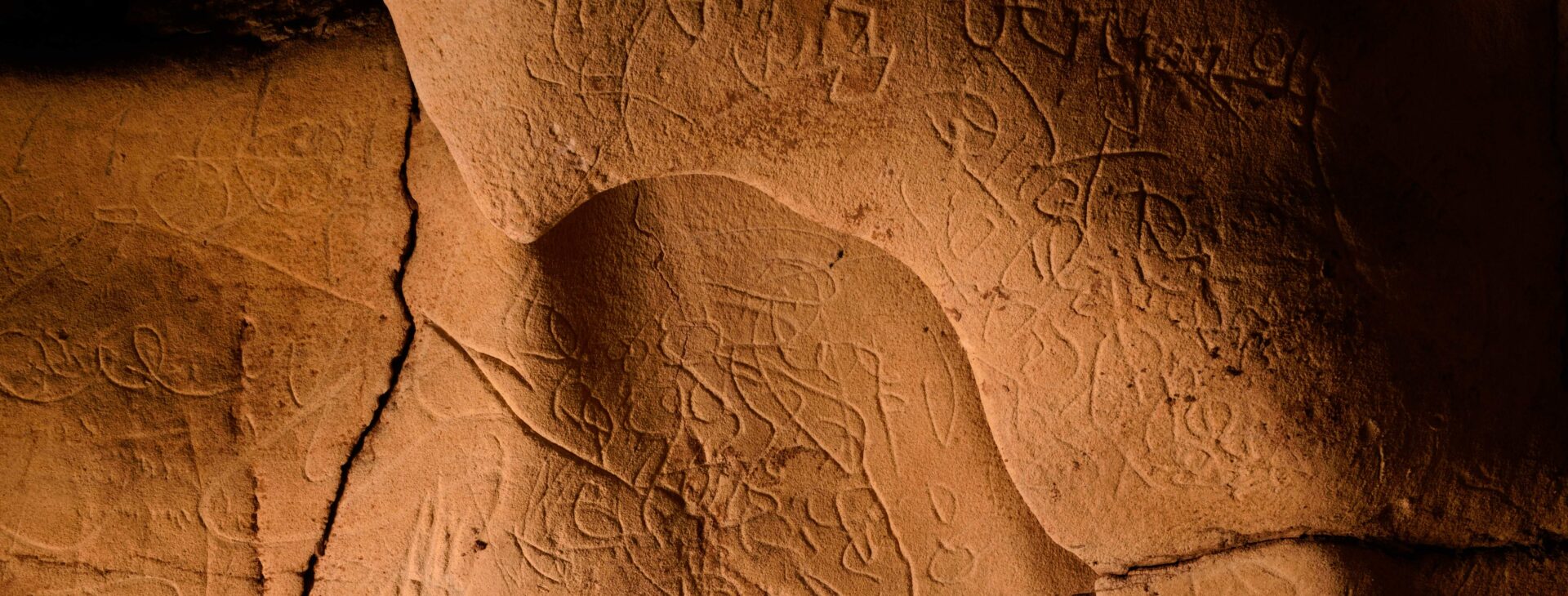The Paleolithic sanctuary of the Font Major cave.
The engravings were located on October 30, 2019 by Josep Maria Vergès, researcher at the Catalan Institute of Human Paleoecology and Social Evolution (IPHES).
The shrine consists of figurative representations of animals mainly horses, hinds and oxen as well as abstract symbols. Due to the number and quality of the representations, it is one of the most significant groups of the so-called Paleolithic Mediterranean province.
The gallery of engravings cannot be visited. These were made on layers of very soft sandy silt, in an area of difficult access and reduced dimensions. The fragility of the support makes that they can be damaged with the minimum contact and it is easy that it happens if one is not very careful.
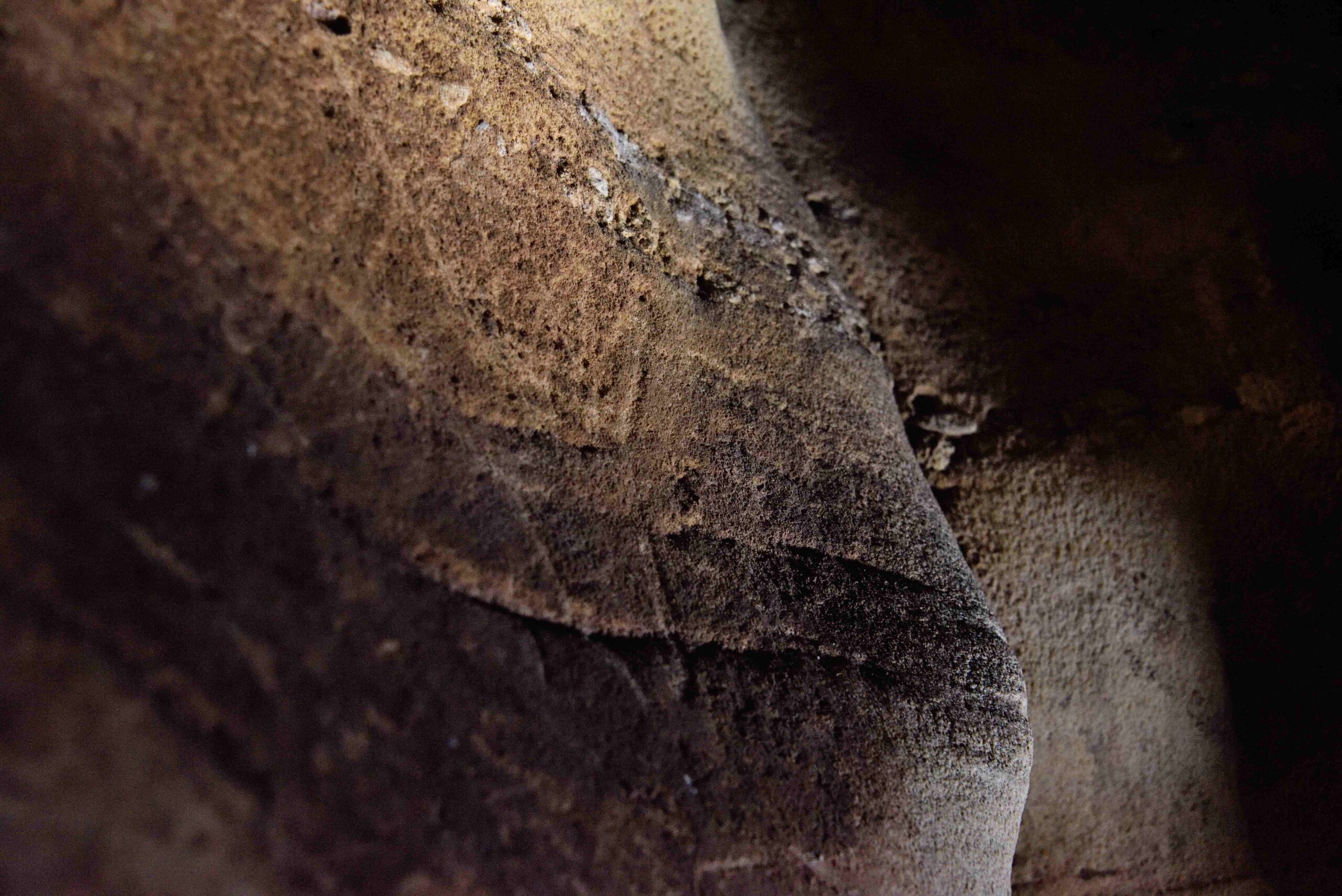
Detail of the head of a watering doe.
Graphics and chronology
This group of rock art, made exclusively by the technique of engraving, is composed of more than 300 motifs, including abstract symbols “signs” and figurative representations of animals, mainly hinds, horses and oxen. Most of the representations can be attributed, due to their style, to the Upper Paleolithic, more specifically to the Magdalenian period, about 15,000 years ago, although some may be slightly older, and others that could be related to the Neolithic and more recent stages. The sanctuary consists of figurative representations of animals, mainly horses, hinds and oxen, as well as abstract symbols. Made exclusively by the technique of engraving, it is composed of more than a hundred motifs.
The shrine consists of figurative representations of animals, mainly horses, hinds and oxen, as well as abstract symbols.
Made exclusively by the technique of engraving, it is composed of more than a hundred motifs.
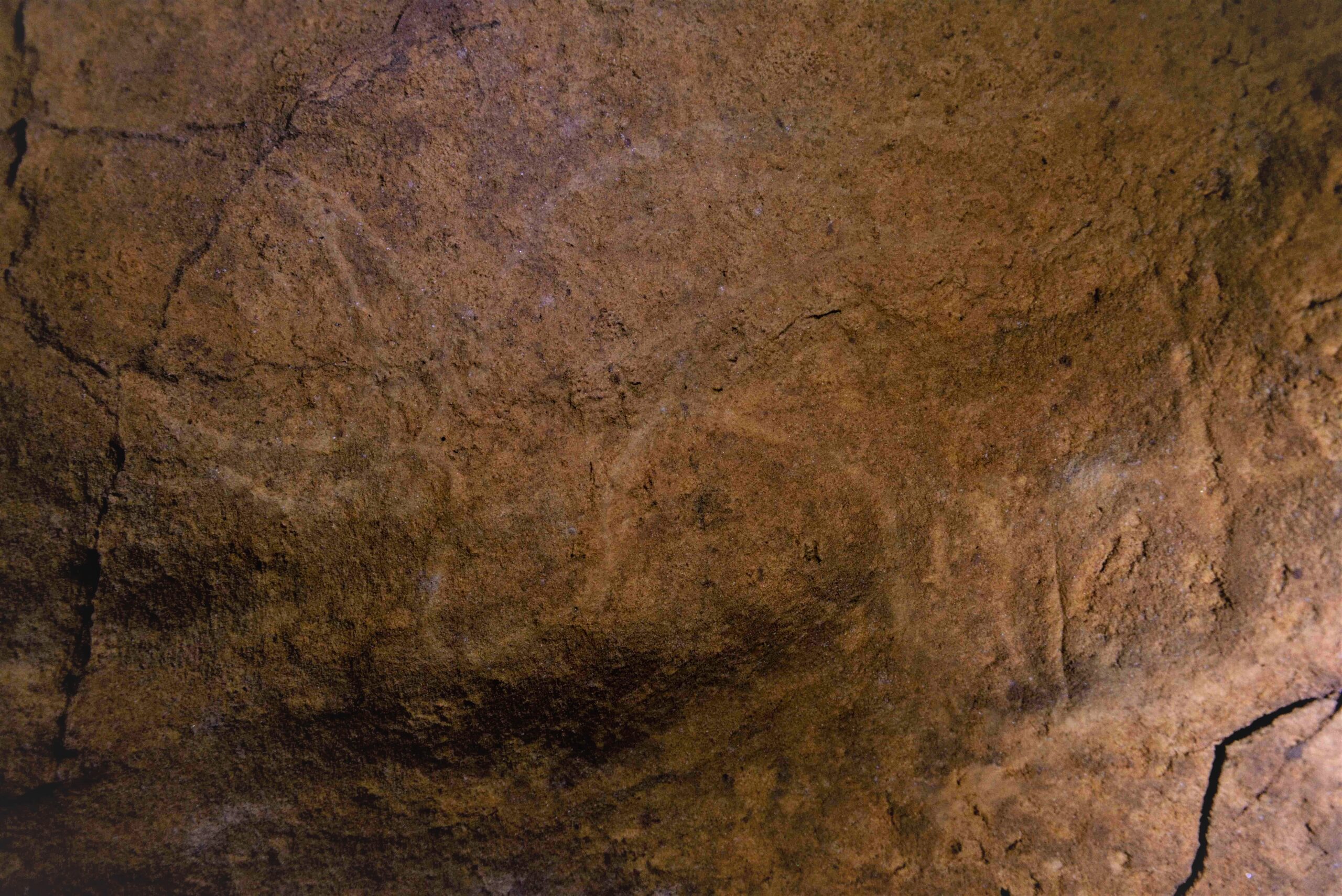
Representation of an auroch, ancestor of today’s bovines.
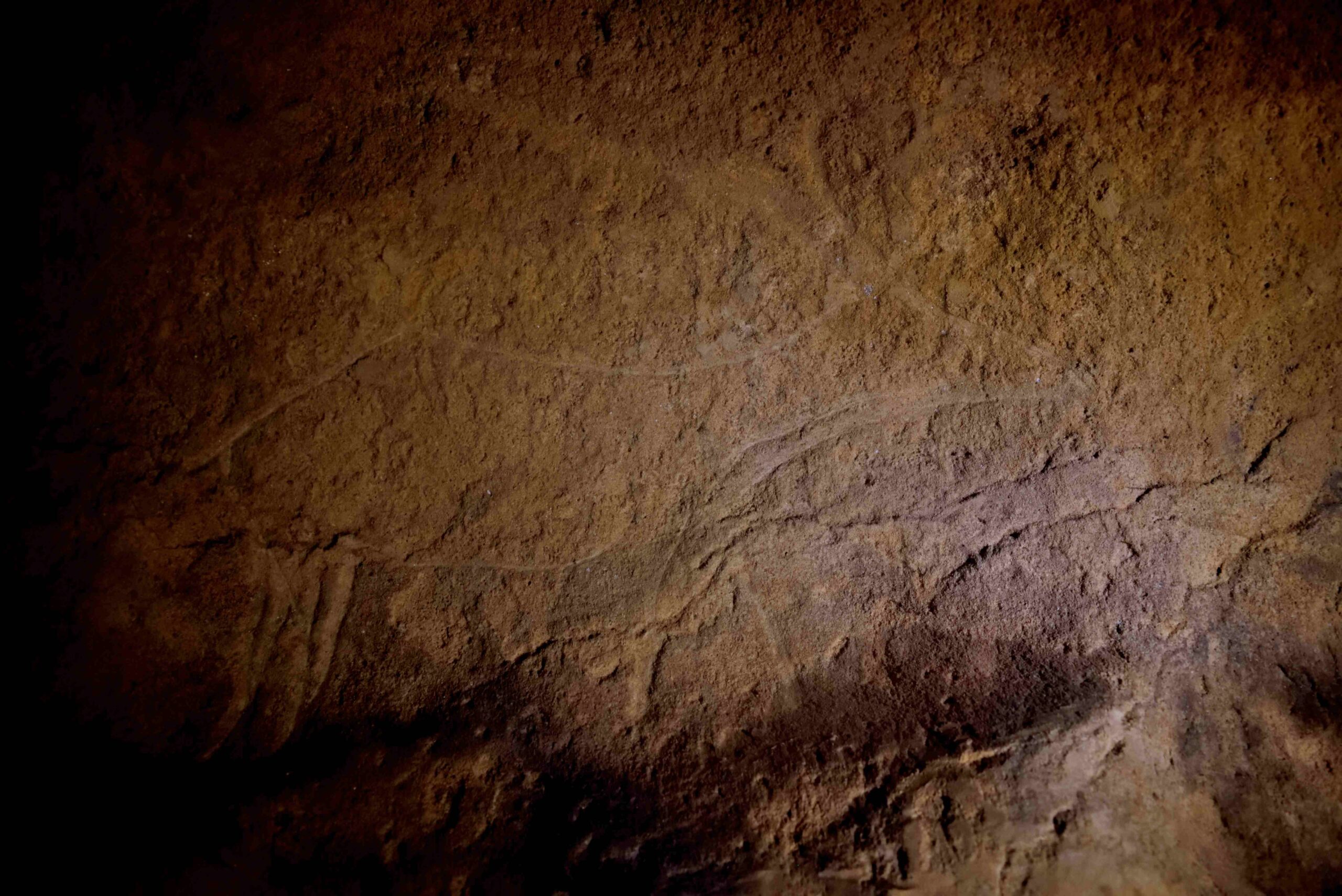
Schematic figure of a deer.
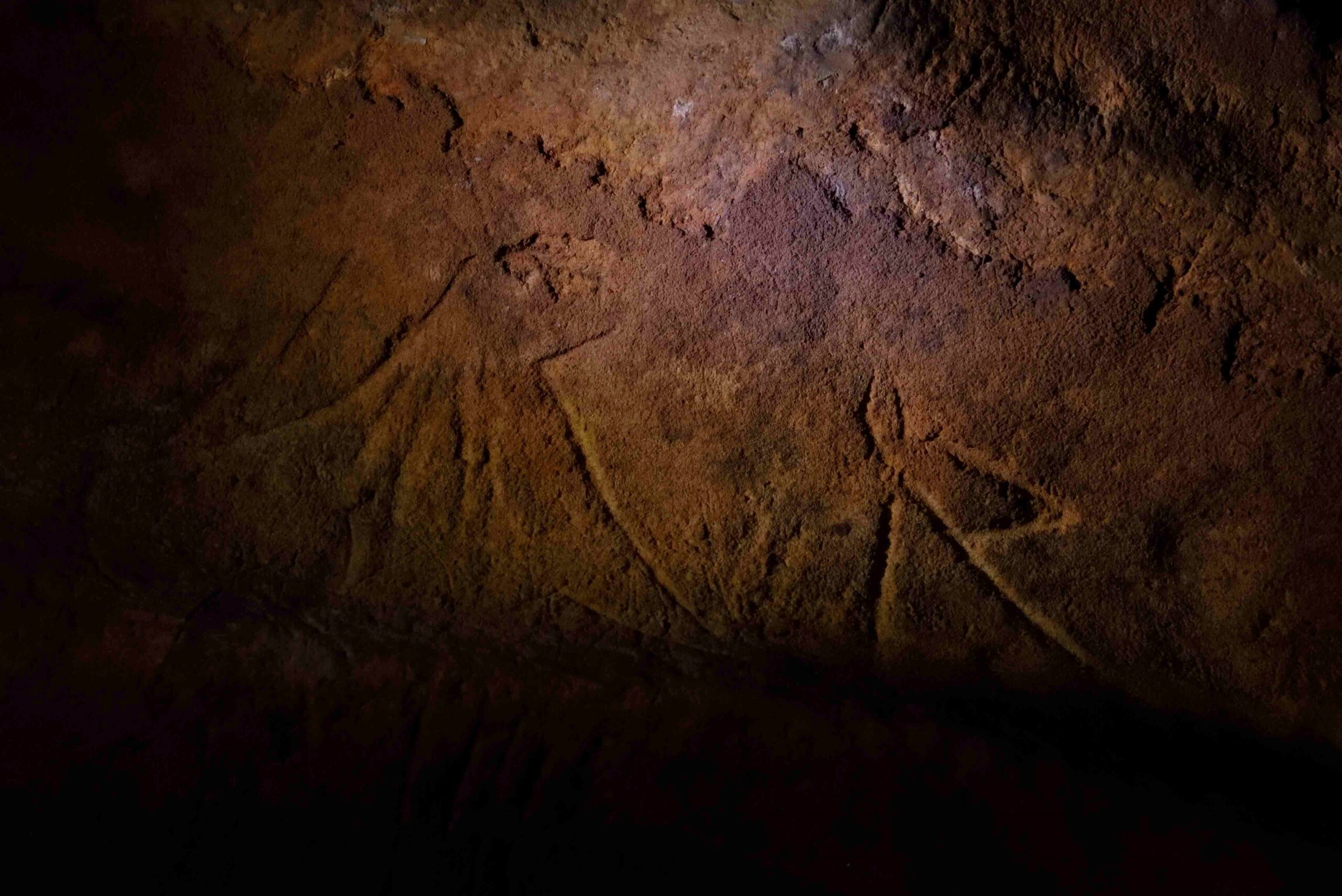
Couple of cervids in geometrical style.
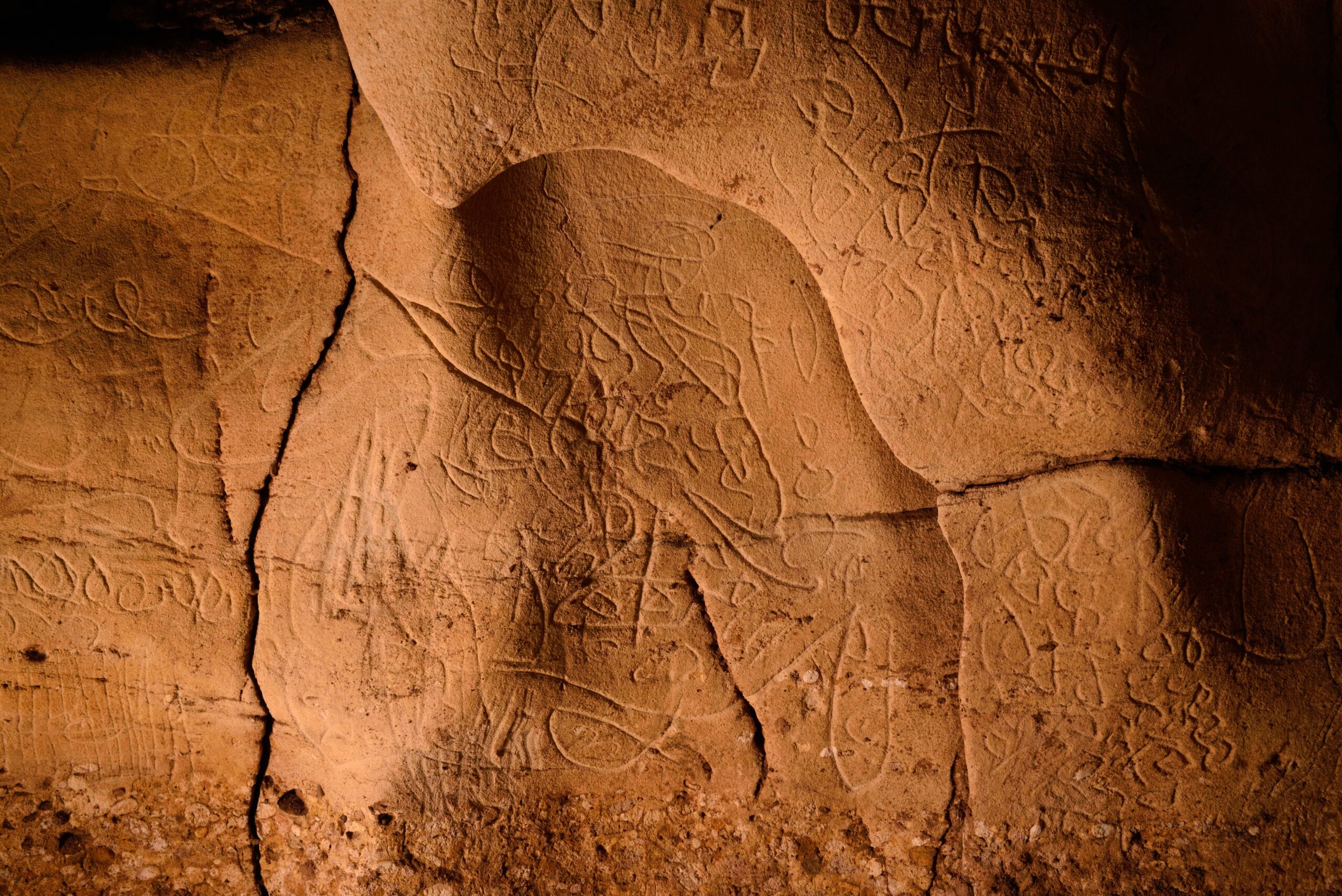
Set of intertwined abstract graphics.
What is its relevance?
It is an exceptional discovery since it is the first sanctuary with figurative and abstract Paleolithic parietal rock art found in Catalonia. Due to the number and quality of the representations, it is one of the most significant groups of the so-called Mediterranean Paleolithic province.
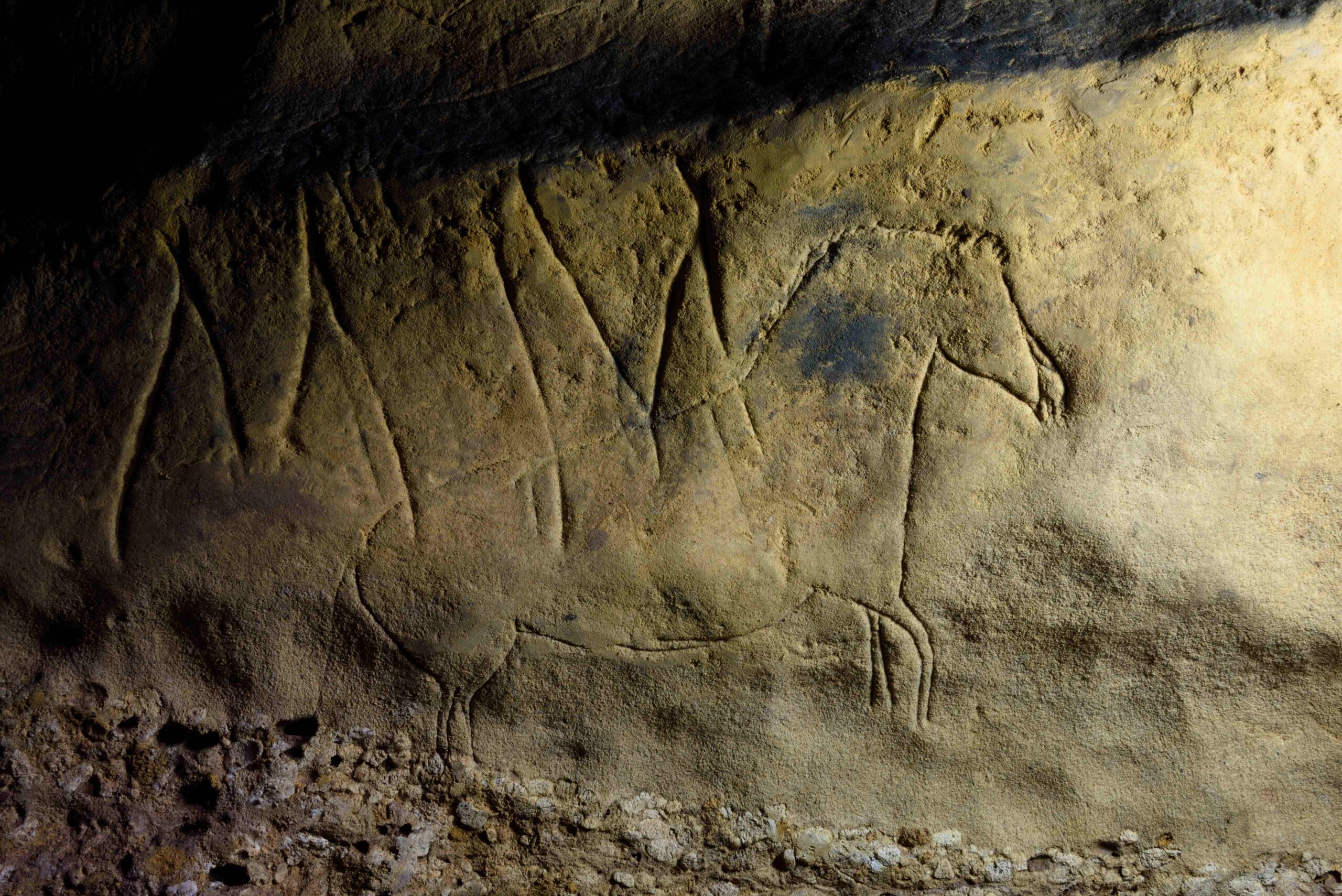
Representació figurativa d’un cavall en moviment.
Why not visit the gallery of engravings?
The engravings were made on a layer of fairly soft sandy silt (included in the conglomerates in which the cave was formed), in an area of difficult access and reduced dimensions. The poor consistency of the support means that they can be damaged or even erased with the slightest contact, and this, given the small dimensions of the space where they are found, is easy to happen if one is not very careful. In fact, several figures are damaged, and others have disappeared because of the traffic of visitors who, unaware of their existence, touched the walls and even, before the museumization of the cave, filled them with graffiti.
It is the first sanctuary with figurative and abstract Paleolithic parietal rock art found in Catalonia.
Several figures are damaged, and others have disappeared due to the traffic of visitors who, unaware of its existence, touched the walls and even before the museumization of the cave, filled them with graffiti.
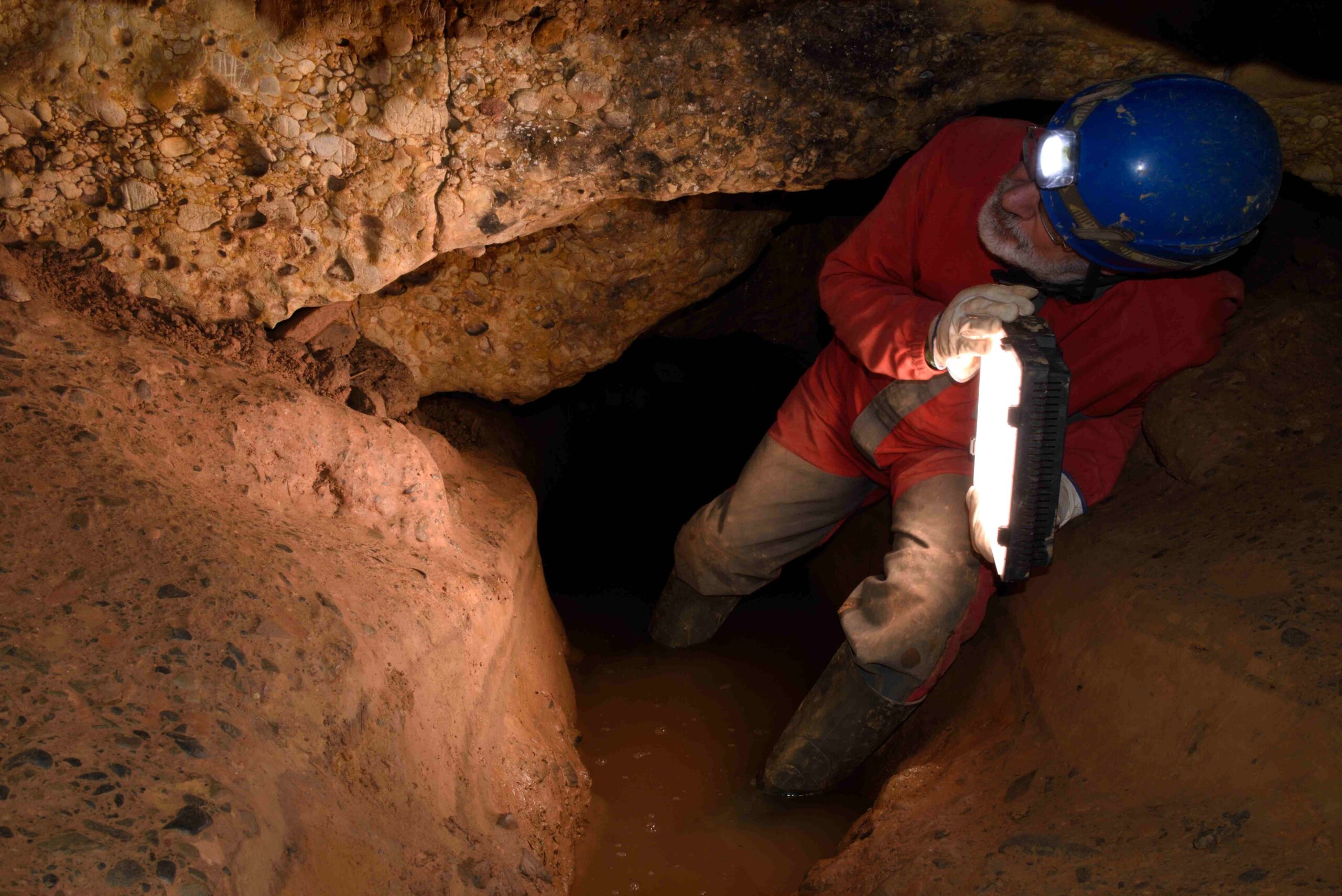
Search for engravings in the Gatoneres del Palletes.
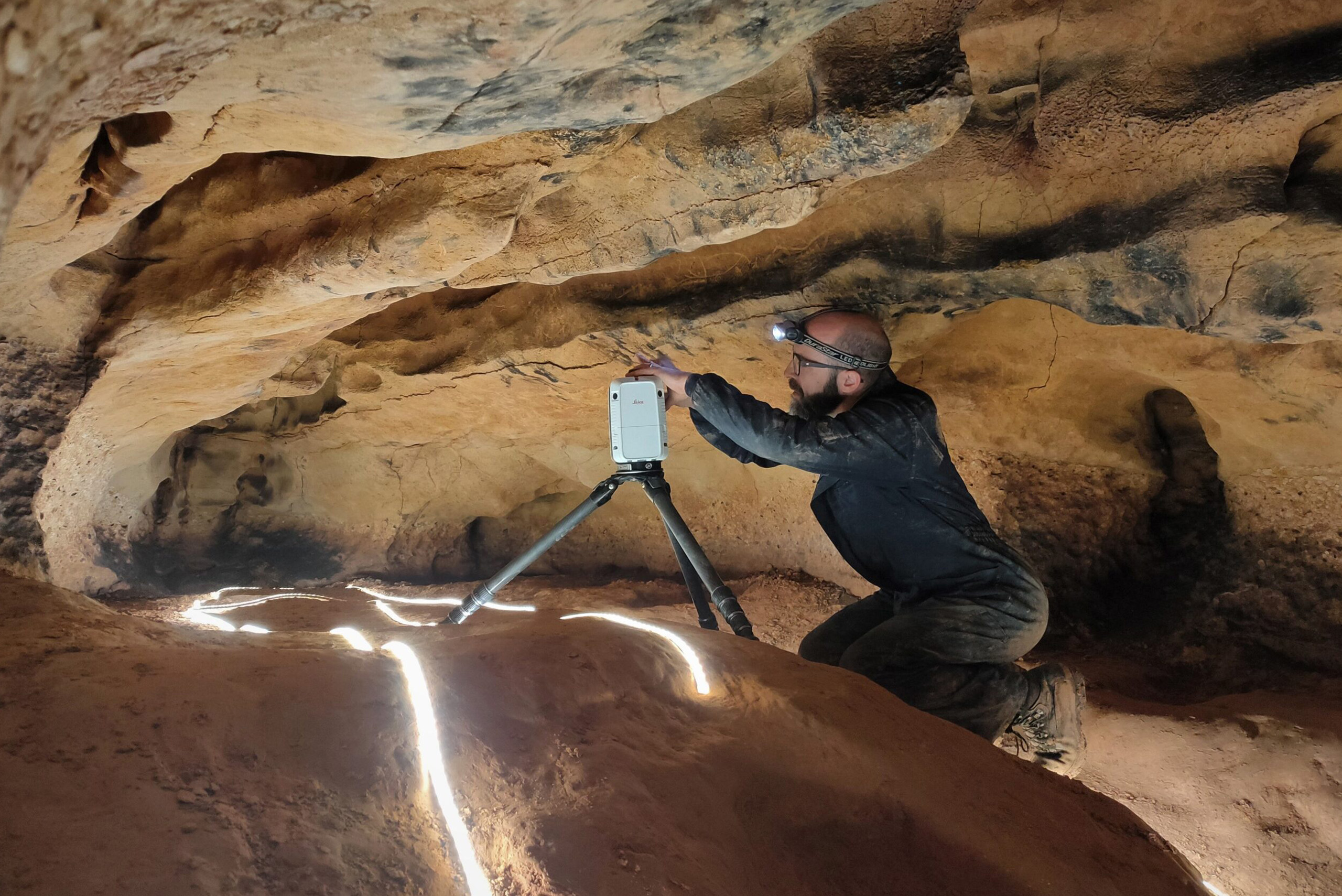
Documentation process of the gallery of engravings by 3D laser scanner, to obtain a three-dimensional model of the cavity.
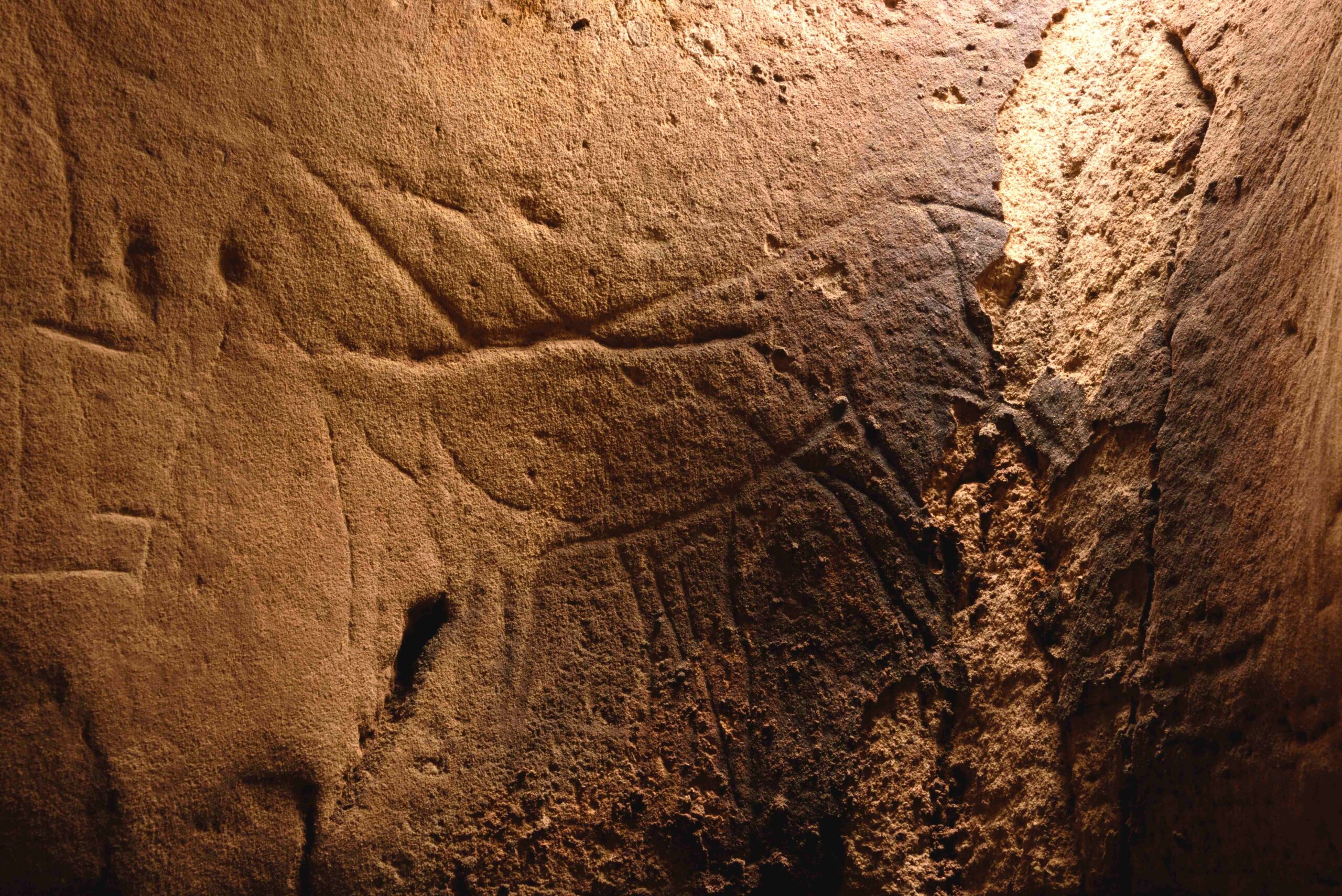
Representation of two overlapping quadrupeds, partially disappeared. The heads have been erased by the contact of the visitors’ hands with the wall and by graffiti, while the rear part is affected by natural phenomena of rock disintegration.
Latest research
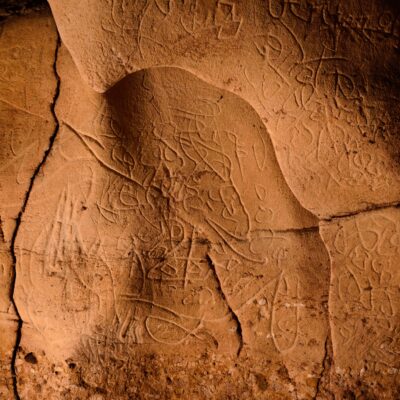
“A cavall dels temps”, la gran troballa paleolítica a l’Espluga de Francolí s’estrena a TV3
El documental “A cavall dels temps”, estrenat recentment a TV3, posa en valor una de les troballes més importants de l’arqueologia catalana: el descobriment de més d’un centenar de gravats del Paleolític Superior a la Cova de la Font Major de l’Espluga de Francolí. Aquests gravats, trobats el 30 d’octubre de 2019, són únics a […]
llegir més…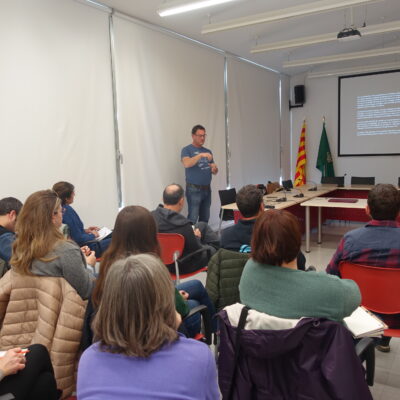
Els arqueòlegs Josep M. Vergès i Miríam Salas expliquen les darreres intervencions a les Coves als treballadors de Turisme
L’Espluga de Francolí continua avançant en l’exploració del santuari Paleolític amb diverses intervencions que estan emmarcades dins del projecte “Evolució paleoambiental i poblament prehistòric a les conques dels rius Francolí, Gaià, Siurana i rieres del Camp de Tarragona” de . Aquestes darreres intervencions realitzades durant aquest 2022 han estat detallades aquest dimarts 10 de gener […]
llegir més…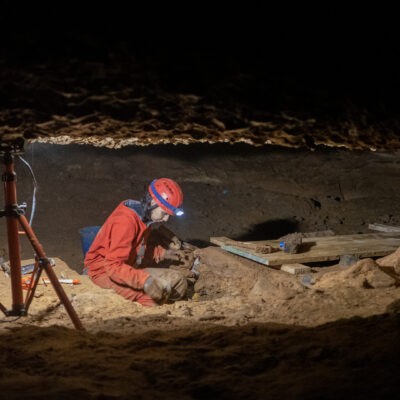
Míriam Salas aconsegueix una beca predoctoral FPU per estudiar els gravats d’art rupestre paleolític de la Cova de la Font Major
Míriam Salas, llicenciada en Història a la Universitat Rovira i Virgili el 2020, va obtenir el màster Erasmus Mundus en Arqueologia Quaternària i Evolució Humana a URV el 2022. El mateix any, va rebre una beca predoctoral FPU (MEFP) per dur a terme el seu doctorat supervisat pel Dr. Josep Maria Vergès Bosch i el Dr. Marcos García Diez. El principal interès del projecte […]
llegir més…Paleolithic sanctuary with more than 400 engravings in the Font Major cave in l’Espluga de Francolí.
Tribuna de Arqueología 2020-2021 – The Paleolithic Sanctuary of the Font Major Cave.
